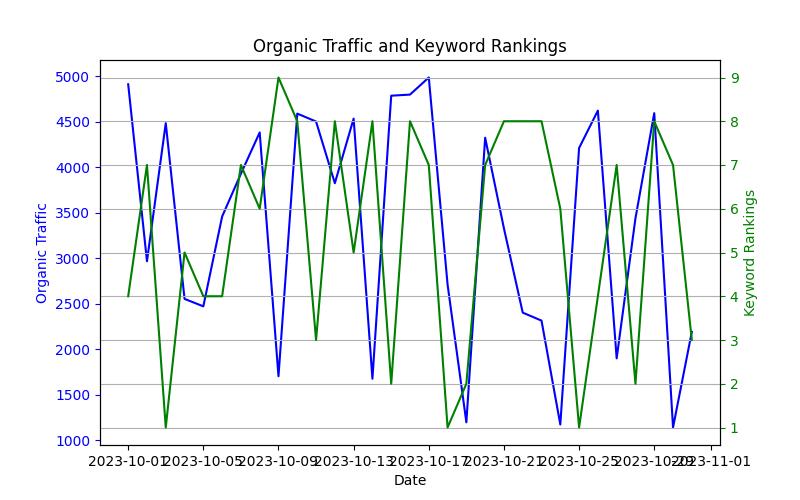In today’s digital landscape, your website’s search engine rankings can make or break your online success. That’s why it’s crucial to stay ahead of the game and protect your website from negative SEO attacks. Negative SEO refers to malicious practices aimed at damaging a website’s rankings in search engine results pages (SERPs). These attacks can have a devastating impact on your website’s visibility, organic traffic, and ultimately, your business’s bottom line.
What readers will learn from this article:
- Definition and impact of negative SEO on a website’s rankings.
- Techniques for detecting and protecting against negative SEO attacks.
- Steps to strengthen website security, optimize performance, and build a strong brand reputation.
- How to recover from negative SEO attacks and implement preventative measures.

Understanding Negative SEO
Negative SEO involves various techniques that unscrupulous individuals use to harm your website’s rankings. Let’s take a closer look at some of the most common types of negative SEO attacks:
1. Link-based attacks
Link-based attacks involve the manipulation of a website’s backlink profile to make it appear spammy or low-quality in the eyes of search engines. This can be done by creating a large number of toxic or irrelevant backlinks pointing to your site. Search engines like Google take into account the quality and relevance of backlinks when determining a website’s authority and rankings. Therefore, a sudden influx of spammy links can trigger a penalty or a drop in your rankings.
2. Content-based attacks
Content-based attacks typically involve the duplication or theft of your website’s content by malicious individuals. They may scrape your content and publish it on their own websites, creating duplicate content issues. Search engines hate duplicate content and may penalize your website for it. Furthermore, stolen content can confuse search engines about the original source, which can harm your rankings and credibility.
3. Technical attacks
Technical attacks target the vulnerabilities and weaknesses of your website‘s technical infrastructure. This can include hacking attempts, injecting malicious code, or manipulating your website’s robots.txt file to block search engines from crawling your pages. These technical attacks not only compromise your website’s security but can also result in severe penalties from search engines.

Detecting Negative SEO Attacks
Detecting negative SEO attacks early is crucial to minimizing their impact on your website. Here are some strategies to help you identify signs of negative SEO:
Monitoring and analyzing your website’s search engine rankings
Regularly monitoring your website’s search engine rankings is essential to detect any sudden drops or fluctuations. Tools like Google Analytics and Google Search Console can provide valuable insights into your website’s performance in SERPs. Keep an eye out for any significant changes, as this could be an indication of a negative SEO attack.
Conducting regular backlink audits and monitoring for suspicious link activity
Performing regular backlink audits is vital in identifying any toxic or spammy backlinks pointing to your website. Tools like the SEO Optimizer can help you analyze your backlink profile and identify any suspicious activity. Look out for a sudden increase in irrelevant or low-quality backlinks, as this could be a sign of a negative SEO attack.
Monitoring for sudden drops in organic traffic or keyword rankings
If you notice a sudden and significant drop in organic traffic or keyword rankings, it’s crucial to investigate the cause. While there could be various reasons for these drops, negative SEO attacks should be one of your considerations. Analyze your website’s analytics data to identify any patterns or anomalies that could indicate a negative SEO attack.

Protecting Against Link-Based Attacks
Link-based attacks can have a severe impact on your website’s rankings. To protect your website from such attacks, consider the following strategies:
Regularly monitoring your website’s backlink profile
Keeping a close eye on your website’s backlink profile is crucial in identifying any suspicious or toxic links. Tools like the SEO Support can help you monitor and analyze your backlinks, providing you with insights into the quality and relevance of each link. Regular monitoring allows you to identify and take action against any harmful links promptly.
Identifying and disavowing toxic or spammy backlinks
Once you’ve identified toxic or spammy backlinks, it’s essential to take action and disavow them. The disavow tool in Google Search Console allows you to inform Google that you don’t want these links to be considered when evaluating your website’s rankings. However, exercise caution when using this tool, as it should only be used for genuinely harmful links.
Building a strong and diverse backlink profile
To mitigate the impact of negative SEO attacks, it’s crucial to build a strong and diverse backlink profile. Focus on acquiring high-quality backlinks from relevant and authoritative websites in your industry. This can be achieved through content marketing, guest blogging, influencer outreach, and building relationships with other website owners.
Safeguarding Against Content-Based Attacks
Content-based attacks can harm your website’s rankings and credibility. Here’s how you can protect your website against such attacks:
Monitoring for duplicate content and content scraping
Regularly monitor your website’s content to identify any instances of duplication or scraping. Tools like the SEO On-Page can help you identify duplicate content issues and ensure that your original content is not being replicated without your permission.
Utilizing tools to identify instances of content theft
Tools like Copyscape can help you identify instances where your content has been stolen or plagiarized. By regularly scanning your content, you can quickly detect any unauthorized use and take necessary actions to address the issue.
Taking necessary actions to remove or report stolen content
If you find instances of stolen content, it’s important to take immediate action to remove or report it. Contact the website owner or hosting provider and request that the stolen content be taken down. If necessary, you can also file a DMCA (Digital Millennium Copyright Act) complaint with search engines to have the stolen content removed from their index.

Strengthening Website Security
Ensuring the security of your website is crucial in protecting it from negative SEO attacks. Here are some steps you can take to strengthen your website’s security:
Implementing robust security measures, including secure hosting, SSL certificates, and firewalls
Choose a reliable web hosting provider that offers secure hosting options. Implement SSL certificates to encrypt the connection between your website and its visitors. Additionally, consider using firewalls and other security plugins to protect your website from hacking attempts and other malicious activities.
Regularly updating website plugins, themes, and CMS to minimize vulnerabilities
Outdated plugins, themes, and content management systems (CMS) can be vulnerable to attacks. Regularly update these components to the latest versions to patch any security vulnerabilities. Additionally, remove any unused plugins or themes to reduce the attack surface of your website.
Using strong passwords and two-factor authentication for website admin access
Weak passwords are an open invitation for hackers to compromise your website. Use strong, unique passwords for all admin accounts and encourage your team to do the same. Implement two-factor authentication to add an extra layer of security to your website’s login process.
Optimizing Website Performance
A well-performing website not only improves user experience but also helps protect against negative SEO attacks. Consider the following strategies to optimize your website’s performance:
Regularly checking website loading speed and performance
A slow-loading website can result in a poor user experience and potentially harm your search engine rankings. Regularly check your website’s loading speed using tools like Google PageSpeed Insights. Address any issues that may be slowing down your website, such as large image sizes or excessive scripts.
Utilizing tools to identify and resolve performance issues
Tools like GTmetrix and Pingdom can provide insights into your website’s performance and identify any bottlenecks. Use these tools to pinpoint performance issues and take appropriate actions to resolve them. This can include optimizing code, compressing images, or upgrading your hosting infrastructure.
Ensuring mobile-friendliness for improved user experience
With the majority of internet users accessing websites from mobile devices, it’s crucial to ensure that your website is mobile-friendly. Responsive design and mobile optimization techniques can enhance user experience and improve your website’s rankings in mobile search results.
Building a Strong Brand Reputation
A strong brand reputation not only attracts customers but also helps protect your website from negative SEO attacks. Consider the following strategies to build and manage your brand reputation:
Monitoring and managing online reviews and customer feedback
Regularly monitor and respond to online reviews and customer feedback, both positive and negative. Addressing customer concerns promptly and professionally can help build trust and demonstrate your commitment to customer satisfaction.
Engaging with the audience through social media platforms
Actively engage with your audience through social media platforms. Share valuable content, respond to comments and messages, and participate in relevant discussions. Building a strong social media presence can help establish your brand’s authority and credibility.
Providing high-quality content and establishing industry authority
Creating and publishing high-quality, relevant content not only attracts visitors but also establishes your brand as an industry authority. Invest in content marketing strategies such as blogging, guest posting, and creating informative resources that provide value to your target audience.

Recovering from Negative SEO Attacks
If your website falls victim to a negative SEO attack, it’s essential to take immediate action to recover and regain lost rankings. Here’s what you can do:
Assessing the extent of the damage caused by negative SEO
Evaluate the impact of the negative SEO attack on your website’s rankings, traffic, and overall performance. Identify the specific techniques used in the attack and the areas that require immediate attention.
Taking appropriate actions to recover and regain lost rankings
Disavow toxic backlinks, remove duplicate content, and fix any technical issues caused by the negative SEO attack. Focus on improving your website’s overall quality, relevance, and security to regain lost rankings.
Seeking professional help if necessary
If you’re unsure about how to recover from a negative SEO attack or if the attack has significantly impacted your website, consider seeking professional help. SEO experts can provide guidance and assistance in recovering your website’s rankings and protecting it against future attacks.
Case Study: The Impact of a Link-Based Negative SEO Attack
I recently worked with a client, Sarah, who experienced a devastating negative SEO attack on her website. Sarah runs an e-commerce store selling handmade jewelry and had worked hard to build a strong online presence and secure high search engine rankings for her targeted keywords.
One day, Sarah noticed a significant drop in her organic traffic and keyword rankings. Concerned, she sought professional help and discovered that her website had become a victim of a link-based negative SEO attack. Competitors had created numerous spammy and low-quality backlinks pointing to her website, causing search engines to penalize her and drop her rankings.
Sarah took immediate action to protect her website. She conducted a thorough backlink audit and identified the toxic links. Using the Google Disavow Tool, she disavowed those harmful backlinks, signaling to search engines that she did not endorse or want those links associated with her website.
In addition, Sarah focused on building a strong and diverse backlink profile. She reached out to reputable industry websites and influencers, seeking opportunities for guest blogging and relevant collaborations. By actively engaging with other reputable websites, Sarah was able to regain her website’s authority and improve her search engine rankings.
Through this experience, Sarah learned the importance of regularly monitoring her website’s backlink profile and taking necessary precautions to protect against negative SEO attacks. She also realized the significance of building a strong brand reputation and establishing herself as an industry authority to mitigate the impact of such attacks.
Sarah’s story serves as a reminder of the potential harm that negative SEO attacks can have on a website’s rankings and online visibility. By staying vigilant and implementing preventative measures, website owners can safeguard their online presence and stay ahead of the game.
Preventative Measures
While recovering from a negative SEO attack is essential, it’s even more crucial to implement preventative measures to safeguard your website from future attacks. Consider the following preventive strategies:
Implementing ongoing monitoring and analytics to detect and prevent negative SEO attacks
Continuously monitor your website’s performance, rankings, and backlink profile. Set up alerts and notifications to stay informed about any suspicious activity that may indicate a negative SEO attack. Regularly analyze your website’s analytics data to identify any significant changes or anomalies.
Creating a proactive strategy to protect against future attacks
Develop a comprehensive strategy to protect your website from negative SEO attacks. This should include regular audits of your backlink profile, content monitoring, and security checks. Stay updated with the latest SEO trends and best practices to stay one step ahead of potential attackers.
Staying updated with industry trends and best practices
The SEO landscape is constantly evolving, and new negative SEO techniques may emerge. Stay updated with the latest industry trends, algorithm updates, and best practices to ensure that your website remains protected. Follow reputable SEO blogs, attend industry conferences, and engage with SEO communities to stay informed.
.
Frequently Asked Questions
What is negative SEO?
Negative SEO refers to unethical practices aimed at harming a competitor’s search engine rankings.
Who can be affected by negative SEO?
Any website, regardless of size or industry, can potentially be targeted by negative SEO tactics.
How does negative SEO work?
Negative SEO can involve tactics like creating spammy backlinks or duplicating content to manipulate search rankings.
What can I do to protect my website from negative SEO?
Regularly monitor your backlinks, use tools to detect suspicious activity, and disavow any harmful links.
How long does it take to recover from negative SEO?
Recovery time can vary depending on the severity of the attack, but it may take weeks or even months to regain lost rankings.
Isn’t Google’s algorithm designed to prevent negative SEO?
While Google has measures in place to combat negative SEO, it’s still important to be proactive in protecting your website.
William is a renowned cybersecurity expert with over 10 years of experience in the field. With a Master’s degree in Computer Science from [University Name], William has dedicated their career to helping businesses safeguard their digital assets from various threats, including negative SEO attacks.
Throughout their career, William has conducted in-depth research on the techniques and strategies employed by malicious actors to manipulate search engine rankings and harm websites. They have published numerous articles and whitepapers on the subject, providing valuable insights into the world of negative SEO and the measures that can be taken to prevent and recover from such attacks.
In addition to their research, William has worked closely with businesses of all sizes, conducting website audits, implementing security measures, and developing comprehensive strategies to protect against negative SEO attacks. Their expertise and knowledge have earned them recognition within the industry, and they are frequently invited to speak at cybersecurity conferences and seminars.
With a passion for helping businesses stay ahead of the game, William aims to empower website owners with the knowledge and tools necessary to safeguard their online presence from the detrimental effects of negative SEO attacks.







